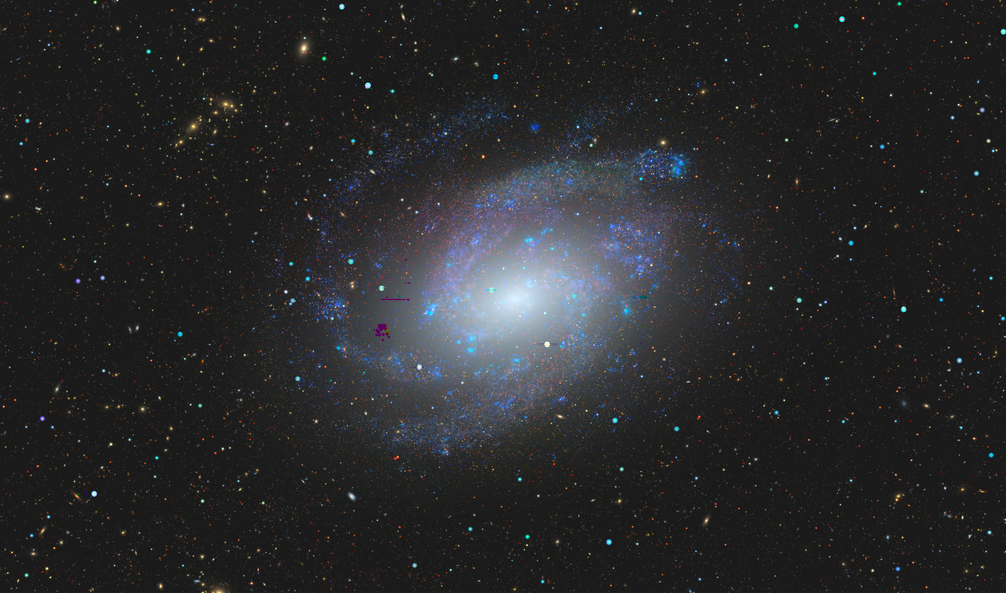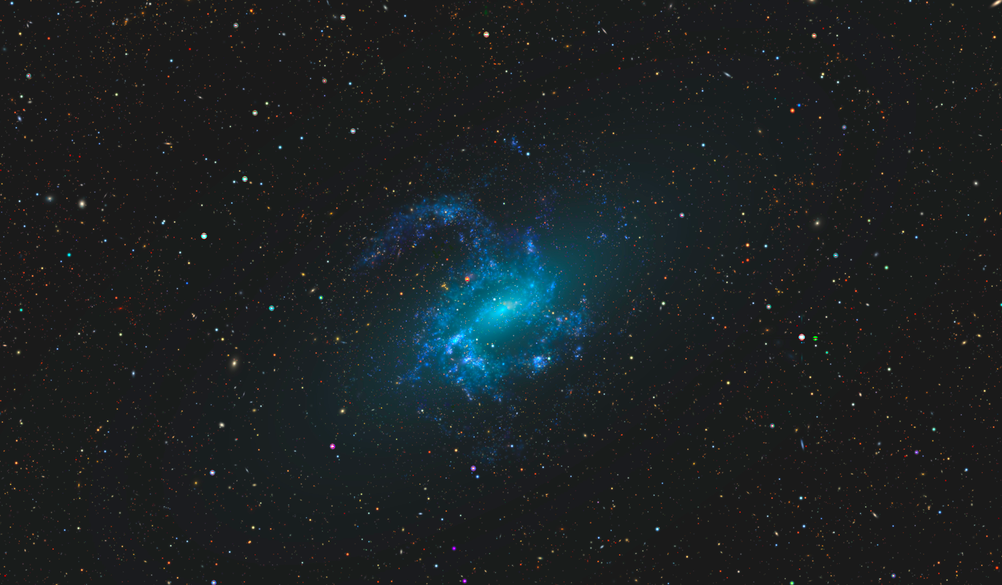
In the observable universe, there are estimated to be between 200 billion to two trillion galaxies. By comparison to these super-Saganian numbers, the 383,620 galaxies captured by the Siena Galaxy Atlas may seem like small potatoes. But the SGA actually represents a landmark achievement among digital astronomy catalogs: as Samantha Hill writes in Astronomy, it draws its data from three Dark Energy Spectroscopic Instrument Legacy Surveys, which together constitute “one of the largest surveys ever conducted.” Coming to 7,637 downloadable pages, it “presents a new possible naming convention for the galaxies, and captures images of the objects in optical and infrared wavelengths. Each of the target’s data set includes a whole slew of other information including its size and morphology.”

Though publicly accessible online, the formidably technical SGA may present the non-astronomer with a somewhat steep learning curve. One way to approach the archive through some of the especially impressive galaxies it captures is to organize the list below its search filters according to size. The images that result are not, of course, photographs of the kind any of us could take by pointing a camera up at the night sky, no matter how pricey the camera. Rather, they’re the results, processed into visual legibility, of enormous amounts of data collected by advanced telescope and satellite.
To get more technical, the SGA is also “the first cosmic atlas to feature the light profiles of galaxies — a curve that describes how the brightness of the galaxy changes from its brightest point, usually at the center, to its dimmest, commonly at its edge.”

So writes Space.com’s Robert Lea, who also explains more about the SGA’s usefulness to scientific professionals. It “represents peak accuracy, promising to be a gold mine of galactic information for scientists aiming to investigate everything from the births and evolutions of galaxies to the distribution of dark matter and propagation of gravitational waves through space.” Its data could also help astronomers “find the sources of gravitational wave signals detected on Earth, because these faint ripples in the very fabric of space and time wash over our planet after traveling for millions of light years.” Even if you’re undertaking no such searches of your own, a trip through the SGA can still enhance your appreciation of how much humanity has come to learn about these “nearby” galaxies — and how much remains to be learned about all those that lie beyond. Enter the archive here.

Related content:
What Would It Be Like to Fly Through the Universe?
Lux Aeterna: A Journey of Light, From Distant Galaxies to Small Drops of Water
Based in Seoul, Colin Marshall writes and broadcasts on cities, language, and culture. His projects include the Substack newsletter Books on Cities, the book The Stateless City: a Walk through 21st-Century Los Angeles and the video series The City in Cinema. Follow him on Twitter at @colinmarshall or on Facebook.
0 Commentaires